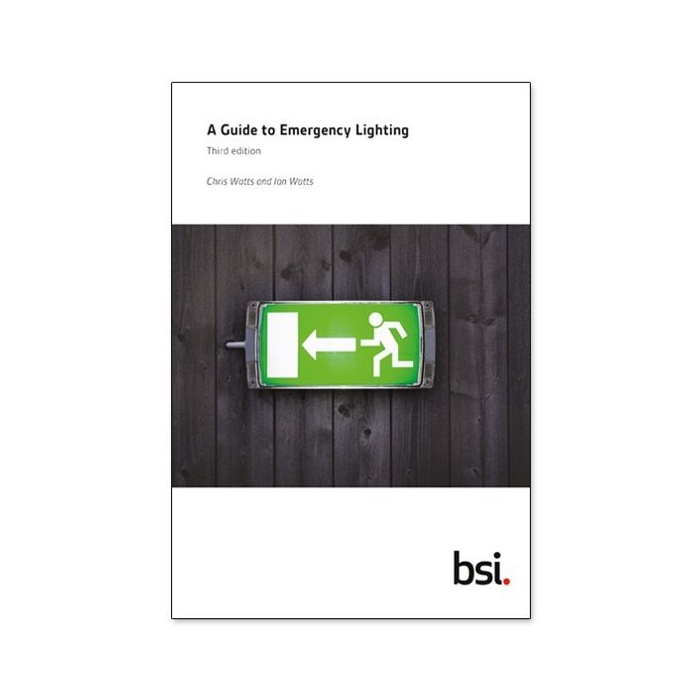
BSI Guide to Emergency Lighting - 3rd Edition (BIP 2081:2020)
BIP 2081:2020
What is BIP 2081:2020 about?

Emergency lighting systems help occupants to leave premises safely in the event of a fire. BIP 2081:2020 is companion guide to BS 5266-1:2016 Emergency lighting. Code of practice for the emergency lighting of premises . It interprets all aspects of the selection, design, installation, maintenance and testing of battery powered emergency lighting systems and helps users understand their legislative obligations.
Who is BIP 2081:2020 for?
- Users and operators of premises on whom the legal duty of safety falls
- Emergency lighting project, design, installation and service engineers
- Other fire protection system engineers
- Electrical contractors
- Facilities managers
- Fire protection companies
- Architects, specifiers and consultants
- Local and inspecting authorities including Building Control Inspectors
- Emergency lighting and fire alarm manufacturers and suppliers
Why should you use BIP 2081:2020?
It gives comprehensive information and guidance on the choice, design and application of emergency lighting based on the latest versions of the appropriate standards and regulations.
The code of practice (BS 5266-1) details a number of forms of emergency lighting. This guide explains the merits of different systems and helps designers optimize a system for specific applications. It details the relative legislation and how the interface with the various fire safety systems should be applied to match the user's fire risk assessment.
In addition BIP 2081:2020 details the design procedure, the installation and verification techniques, and the testing, servicing and repair procedures that should be adopted.
The final section explains the documentation steps and model certificates that should be raised to enable the user to demonstrate the suitability of the system to meet the protection required by their fire risk assessment.
BIP 2081:2020 can help users achieve UN Sustainable Development Goal 9 on industry, innovation and infrastructure because it contributes to the building of resilient infrastructure. It can help users achieve Goal 11 on sustainable cities and communities by making cities and human settlements safer.
What's new about BIP 2081:2020?
This new edition has been updated to assist those engineers wishing to protect occupants from the hazards identified by risk assessments and has also been expanded to give guidance to protect occupants from sudden loss of the normal lighting supply.
It has been updated to refer to developing products and technologies such as the implications of the use of Light Emitting Diodes (LED) light sources and Lithium battery power sources and new central power and automatic testing systems. BIP 2081:2020 also includes information on the use of switched safety sign systems which allow building managers to direct occupants to the most suitable exit routes.
In addition to explaining the changes in BS 5266-1:2016, other relevant standards have been updated and information from the following new documents is also included:
a) BS 7273-6:2019 Code of practice for the operation of fire protection measures. Fire detection and fire alarm systems. Interface with ancillary systems and equipment This standard is important as it covers the interface of emergency lighting with other fire protection systems
PD CEN/TS 17165:2018 Light and lighting. Lighting system design process This technical specification specifies steps to be taken in lighting system design and lists responsibilities for the implementation and operation of the lighting solution
| ISBN | 9780539131956 |
|---|---|
| Publication Status | Current |
| Publication Date | 2020-03-31 |
| Edition | 3rd |
| Format (Paperback, Hardback etc) | Paperback |
| Total Pages | 280 |
| Brand / Publisher | BSI |
| Publisher | BSI |
We offer customers a wide range of delivery options from Free (7-10 working days) ... right up to by Next Day by 9am (subject to location and stock availability).
- Simply choose your preferred service when checking out
- We show "live" stock levels for all publications
- Orders received after 3:45pm will be processed on the next working day.
- Unless specifically requested, our delivery partners will not attempt a weekend delivery
We offer all customers a "No Quibble" 28 day returns policy.
If you need to return a title for any reason ...
- Contact our customer services team first to explain what you are returning and the reason
- Request a Returns Authorisation Number
- We will email you this and a link to arrange your return quickly & easily via Royal Mail
- Take your return to your nearest Post Office and they will do the rest
Please refer to our Returns page for full details & charges.